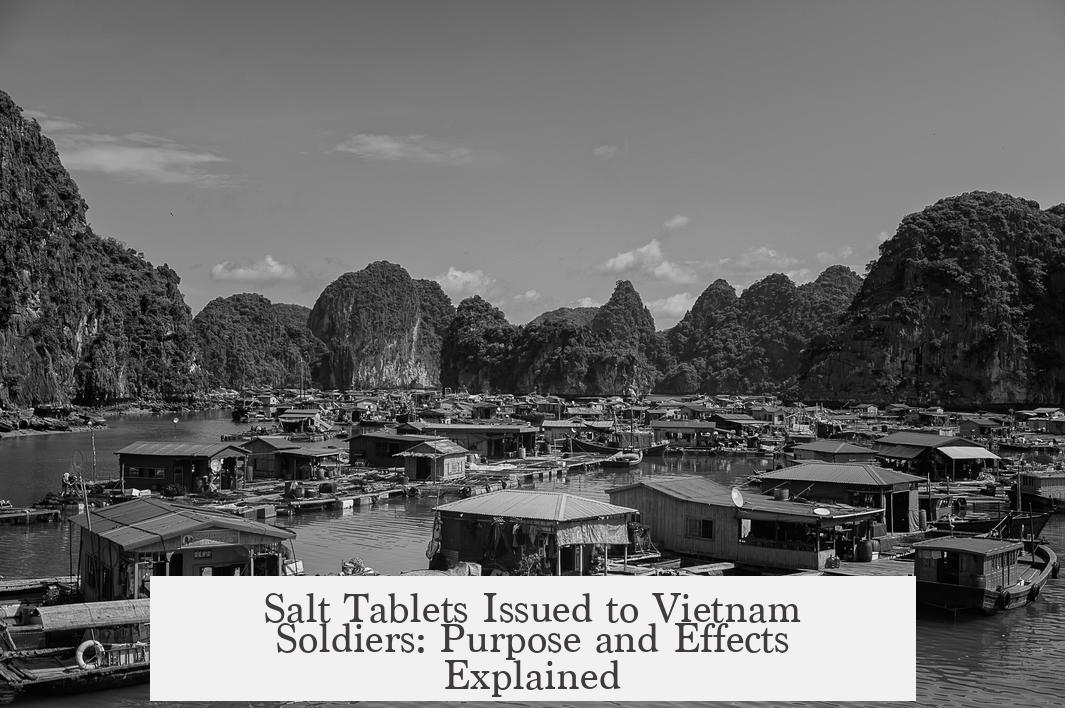Salt tablets given to soldiers fighting in Vietnam were supplements designed to replenish sodium lost through heavy sweating and physical exertion in the tropical environment. They helped maintain electrolyte balance, prevent dehydration, and support proper nerve and muscle function under combat conditions.
During the Vietnam War, soldiers faced intense heat and humidity. This caused excessive sweating, leading to significant sodium loss. Sodium is essential for hydration, blood pressure regulation, and overall muscle and nerve function. The salt tablets aimed to counteract deficiencies caused by these extreme conditions.
Typically, salt tablets contained concentrated amounts of sodium chloride. This allowed soldiers to quickly restore vital electrolytes without relying solely on food or drink. Tablets were lightweight, portable, and easily included in field ration packs. Soldiers took them orally, often with water, to facilitate absorption and effectiveness.
Medical personnel or field medics usually distributed these tablets. They monitored soldiers’ health to ensure proper use, avoiding overconsumption that could lead to high blood pressure or other complications. Not all soldiers took salt pills; those with specific medical conditions or dietary restrictions were sometimes advised against them.
Salt tablets were not limited to combat situations. Soldiers also consumed them during training or non-combat duties involving physical exertion in heat. The tablets provided a standardized and reliable way to maintain sodium levels when alternative replenishment sources were unavailable or insufficient.
Alternative methods to maintain electrolyte balance included salty canned foods and electrolyte-rich sports drinks. However, sports drinks were less accessible or reliable in frontline situations during the Vietnam War. Salt pills offered convenience and consistency, valuable for soldiers operating in difficult environments.
Despite their benefits, salt tablets require a sufficient intake of water to be effective and safe. This significant water consumption sometimes limited their practicality. Today, the reliance on such tablets has decreased, partly because modern nutrition emphasizes electrolyte-containing beverages with balanced sugar content.
Most Western diets already include high salt levels, reducing the need for additional supplementation in many cases. Also, modern military forces use a variety of electrolyte supplements tailored to specific environmental and operational needs. Salt tablets remain one option among many to ensure hydration and electrolyte balance.
| Aspect | Details |
|---|---|
| Purpose | Replenish sodium lost due to heavy sweating and exertion in the tropical climate |
| Function | Maintain electrolyte balance, support nerve and muscle function, prevent dehydration |
| Distribution | Issued by medical personnel as part of ration packs, taken with water |
| Usage Context | Used in combat, training, and physically demanding activities |
| Alternatives | Salty foods, electrolyte sports drinks |
| Modern Use | Reduced but still used; replaced or supplemented by advanced electrolyte solutions |
The primary goal of salt tablets in Vietnam was to sustain soldiers’ physical performance and prevent heat-related health problems. Sodium is crucial for keeping the body hydrated and functioning well during demanding conditions. Salt pills provided a practical means to replace lost electrolytes in situations where other options were limited or unavailable.
Although their use has declined, salt tablets reflect a historical approach to managing dehydration risks in military settings. Advances in diet, hydration strategies, and electrolyte science have expanded available tools. Nonetheless, salt tablets exemplify efforts to maintain soldiers’ readiness and health amid the challenges posed by tropical warfare.
- Salt tablets supplemented sodium lost in hot, humid environments to prevent dehydration.
- They supported critical nerve and muscle function by maintaining electrolyte balance.
- Issued by medics, these pills were part of field rations and taken orally with water.
- Alternative replenishment included salty foods and electrolyte drinks, but tablets offered portability.
- Excess intake risks required controlled dosages and medical oversight.
- Modern military hydration uses more varied electrolyte supplements, reducing reliance on salt pills.




